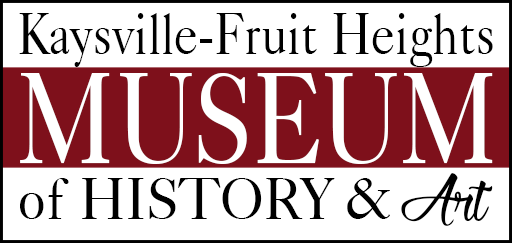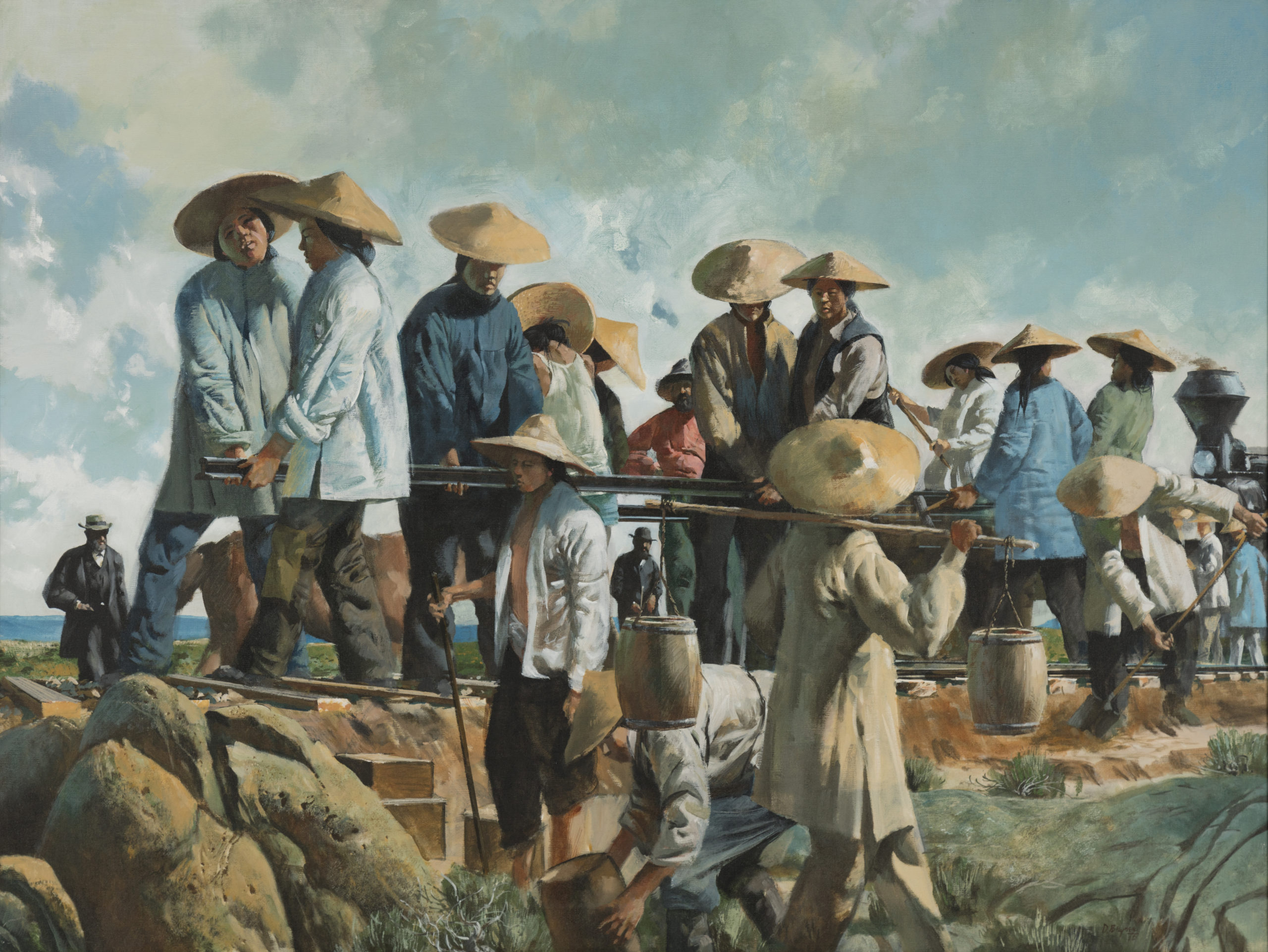1976 Exhibit Brochure
In 1869 Chinese track layers for the Central Pacific laid 10 miles of track in Box Elder County in one day, a record which has never been equaled.
2023 Exhibit Guide
Chinese immigrants were drawn to the western United States as a result of the Opium Wars and to ensure their families’ survival. A significant portion of the labor force for the first American transcontinental railroad was made up of Chinese migrant workers. Numbering between 10,000 and 15,000, the Chinese track layers constituted about 90% of the Central Pacific Railroad’s workforce that laid track between Sacramento, California and Promontory, Utah by 1868.
Known for their strong work ethic and efficiency, Chinese employees frequently performed the most difficult and dangerous tasks, yet consistently received lower wages than their white peers. In 1869, it is reported that Chinese track layers working for the Central Pacific line laid 10 miles of track in Box Elder County in just one day.
Kaysville Area Connections
Three men of Chinese or “Celestial Empire” descent moved into Kaysville in 1896. Yee Kee’s laundry business was in a frame building on Main Street, previously the Ladies Aid Society Hall. Hop Gee was a farmer who raised vegetables and herbs on a small plot of land in what is now Layton1. They treated their customers to a Chinese New Year “candy and nuts2”.
Artist
Dale W. Bryner (1935-1999)
Dale Bryner from Ogden, Utah received both Bachelor and Master of Fine Arts degrees from the University of Utah, and joined the Weber State College art faculty in 1965. He was highly regarded as a skilled life-drawing and figure-structure teacher.
Bryner’s work, recognized both locally and nationally, involves a variety of mediums including gouache, oils, airbrush, printmaking, illustration, etching, and photography.
Sources
- “Bicentennial Historical Art Collection.” 1976 Exhibition Brochure, Special Collections, Weber State University. Spelling corrected.
- Eyes Toward the Past. DVD.
- Karras, Marilyn. “10 Miles of Track Laid in a Day.” The Ogden Standard Examiner, 09 May 1976, Sun., page 31.
- Shashkevich, Alex. “Stanford project gives voice to Chinese workers who helped build the Transcontinental Railroad”. 9 Apr. 2019.
Citations
- “Kaysville Kinks“. Davis County Clipper, 20 October, 1899, Fri., page 1.
- “Kaysville Kinks”. Davis County Clipper, 09 February, 1900, Fri., page 1.
Notes
Copyright owned by Weber State University Storytelling Festival. All rights reserved. Painting shown by Kaysville – Fruit Heights Museum with permission. Painting number six in the 2023 exhibit guide.


